Alla Biennale di Venezia 2024, sino al 24 Novembre è visitabile il Padiglione Nazionale dell’Oman, presso il Palazzo Navagero, avente le opere degli artisti Alia Al Farsi, Ali Al Jabri, Essa Al Mufarji, Sarah Al Olaqi ed Adham Al Farsi. La loro mostra s’intitola Malath – Haven. La traduzione dei due termini, fra la lingua araba e quella inglese, eleva l’oasi “umile” ma reale del porto al rango di paradiso non solo intermedio. Ricordiamo anche che la Biennale di Venezia 2024 s’intitola Stranieri ovunque. Tradizionalmente l’Oman è considerato molto ospitale, coi suoi giardini (contraddicendo l’immaginario collettivo, riguardo la desertificazione della Penisola Arabica). Noi lo percepiamo di passaggio, fra l’Oriente e l’Occidente. Se la teoria parte da una condizione per cui si è stranieri ovunque, allora l’Oman alla prassi sviluppa l’ammissione per cui si accoglie chiunque sosti. Ovviamente nessuno desidera andarsene da un paradiso. Ma la vita comporta l’ineluttabilità d’una transitorietà: dalla nascita alla morte. Quindi il paradiso intermedio (come per l’Oman) ci spinge ad una comprensione, trasformando la finitudine (negativamente) in socializzazione (positivamente). Chi accoglie gentilmente, può abituare ad affezionarsi. Magari l’Oman diventerà una sosta in cui ritornare, per motivi privati e senza fretta (aggiungendo il godimento). Virtualmente dal suo “gomito” a “sestante”, ad est della Penisola Arabica, il marinaio scandirebbe la tabella di marcia, per un servizio commerciale. Normalmente nessuno immagina che il porto possa verdeggiare, come un giardino. Al contrario l’acqua blu dell’oceano avrebbe le onde ristagnanti, passando dalle dune alle lamiere d’un container. L’arte permette “magicamente” di sospendere la finitudine umana (spesso al “palliativo” dei pregiudizi culturali per “tiranti”). In Oman, quella addirittura trasformerà il porto: appunto in giardino. Alla miniatura immaginiamo una tenda d’artigianato locale, per riposare liberamente al vento, la quale ramificherà le radici, appena ingabbianti, delle ancore seriali (siccome le catene devono rispettare le misure internazionali). A Venezia, la mostra Malath – Haven è curata da uno degli artisti: Alia Al Farsi.
Sarah Al Olaqi porta le sue installazioni, che appartengono al progetto dal titolo Breaking bread. Lei vuole celebrare la resilienza in Oman delle donne, lavorando in modo artigianale, all’interno della tradizione, in specie citando la cucina. Immaginiamo che, mettendo le labbra al posto dei bracci, in un candelabro, poi si giunga persino a bere da una coppa del sole o della luna, rispettivamente con l’oro e l’argento. Forse l’unica contestazione per sottostimare la bellezza dell’Universo è quella per cui gli manca una danza. Al correlato della stanza da pranzo, con la “luce” giornaliera dei nutrimenti, valgono alcuni riti: partendo da un’accogliente eleganza per il galateo. Così pure la coppa si meriterebbe, tramite l’arte, una danza del ventre (classicamente mediorientale). Ma quanto l’installazione avrà la miniatura d’un pareo? L’Oman, all’angolo più orientale della Penisola Arabica, trasformerebbe la sabbia del deserto in briciole di pane. L’ospitalità è rappresentata al massimo grado dalla cucina, simbolicamente. Le coppe si faranno “sorseggiare” come le colline, e grazie ai fusi per tessitura. Da una luce a verdeggiare, lo stagno rispetto all’oceano non rinsecchirà, avendo, con la foglia d’oro, un metabolismo limpido. Sarah Al Olaqi può anche ingrandire un niqab, col ricorso ai cucchiai. Si perderà l’inquietudine pregiudiziale, in favore d’un mistero condiviso. Il cucchiaio renderebbe l’occhio più accogliente, complici i “timidi sorsi” della brillantezza.
Ad Essa Al Mufarji interessa la forma ingigantita d’una colonna, da appendere in orizzontale (fra le pareti opposte). Ma il visitatore può “spiarla” agevolmente, complice la base sventrata. Gli intarsi calligrafici in arabo virtualmente riecheggeranno. Se il Medio Oriente è storicamente la “culla” della civiltà, allora gli archeologi ce lo dimostreranno. Pare che l’installazione dell’artista si percepisca da un cannocchiale per l’ascolto. Quella si chiama Madad, ed invita alla dilatazione dei sensi. Qualunque lingua è parlata in automatico. Non occorre il “disturbo” per la messa a fuoco del proprio orecchio. Ma l’archeologia può comportare la decodificazione. Quindi Essa Al Mufarji, in via sinestetica, esibisce l’orecchio da un monitor dentro la colonna. E’ un invito ad imparare il “dosaggio” delle parole, dall’accoglienza dialogica. Il decostruzionismo storiografico ci svelerebbe un esperanto per l’astrattismo. Dalla colonna “oracolare”, l’orecchio crescerebbe all’interno d’un prisma triangolare. E’ la dialettica per cui la Mezzaluna Fertile permette agli Arabi di “perlustrare” il Settentrione, dal cono della loro penisola. Il “periscopio” complessivo sarebbe manovrato dalla punta per l’Oman. Gli Arabi furono fondamentali per la diffusione dei numeri, all’interculturalità.
Alia Al Farsi esteticamente cerca un connubio tra l’arazzo da tessere ed il quadro da dipingere. In specie è raffigurata una città di porte o finestre: quella in Oman dove l’artista nacque, Matrah. L’opera s’intitola Alia’s alleys, e va percepita al cubismo sognante (da Paul Cezanne a Marc Chagall). L’artista ha portato con sé il tessuto direttamente dall’Oman, comprando poi i colori a Venezia. Si tratta d’un site-specific, caricando sul filo conduttore dell’accoglienza, per l’intera Biennale. L’artista riempie la parete; ma può lasciarla col vetro, al fine d’allungare virtualmente la sua città, perfino verso nuovi Stati. Sul pavimento, le distese monocromatiche funzionerebbero da bandiere per i gruppi etnici dell’Oman. Peraltro questi convivono in pace, da molti anni. Alia Al Farsi lo favorisce, tramite i colori sgargianti per la spensieratezza dai ricordi della propria infanzia. C’è la teatralità per le mani che strizzano il tessuto, portando un sipario sui piani o sui tetti delle case. Alcune pareti, impilandosi, ci svelerebbero la figura nascosta d’una ballerina. Sappiamo che i tessuti dell’opera derivano da indumenti ed ornamenti, indossati in Oman dalle donne. Esisterebbe il giardino danzante dei mercati, classicamente, nel mondo arabo. Ci riferiamo alle accese contrattazioni fra le bancarelle. In generale, se ci stanno i porti, allora devono starci anche i mercati. Simbolicamente, il “faro” dell’infanzia apparirebbe più intermittente, dall’anima. A quello manca ancora l’obiettivo d’una vita, mediante la maturazione della mente (da adulti). Quantomeno il mare, col suo orizzonte da cavalcare (all’infinitezza delle opzioni) conserva negli abissi gli organismi viventi che pullulano, ai banchi.
Il porto è sempre agognato, per chi naviga. Ce lo conferma, secondo Alessandro Aresu, l’impossibilità di lasciare in mare la sensibilità d’una traccia. Ma si vive solo grazie all’ordinamento. Dalla scia si deve passare all’ancora. Precisamente il mare, ondeggiando, non conosce la linea retta. La semplice isola a volte sembra ambigua, distaccata tanto dall’acqua quanto dalla terra, al paradiso autonomista dell’utopia. In sociologia, ci chiederemo quanto la sperimentazione potrà “millantare” la conoscenza. Si rischia il paradosso per cui chi all’inizio preferisce l’isolazionismo poi pretende d’esportarlo. L’Oman, al paradiso degli ordinamenti, più “umilmente” favorisce l’accoglienza della sua neutralità verso la diplomazia internazionale.
A Venezia, Adham Al Farsi esibisce la videoinstallazione dal titolo The fate of outsiders. La tartaruga verde è la protagonista della storia. Simbolicamente vale la dialettica tra il destino e la meta. La tartaruga abbandona l’ignoto degli abissi quasi irradiando la sabbia, per la nidificazione. Sarà il suggello per il tentativo di seguire la propria stella (dalla filosofia della religione). Prima, esiste il “pascolo” delle erbe marine, per la generica regolazione d’un ecosistema. Dunque la tartaruga non vive solo lentamente, in balia del caso? All’artista interessa la sua resilienza. Con l’antropomorfismo, l’abitudine alla cura per l’ambiente permette di progredire all’eccezionalità dell’accoglienza: massimamente nei confronti dei migranti.
Ali Al Jabri ha installato una serie di sculture, denominate Water. I cilindri in marmo s’ergono assemblati a moduli, quasi alla stregua d’una “caffettiera” o d’una “teiera”. Se lo immaginiamo, è anche a causa del legno all’interno. Questo potrà profumare dal cardamomo, o nascondere l’acqua sul fondo. Il porto delle terre emerse si dovrebbe identificare nel pozzo. Il caffè ed il tè simboleggiano se non l’ospitalità di certo la convivialità. Il pozzo li potenzierebbe, lasciando che in tutta sincerità si esprima un desiderio personale. Dopo la fase dell’accoglienza, pure il rifugiato contribuirà alla gestione serena (pacificante) del Paese straniero. Ciò è simboleggiato dalla fragranza (assai orientale, nell’immaginario collettivo), quando il desiderio personale sembra a portata di mano.
THE HUMBLE BUT REAL OASIS OF THE HARBOUR IS NOT A PARADISE BARELY TRANSITORY
At the Venice Biennale 2024, until 24 November we can visit the National Pavilion of Oman, at the Palazzo Navagero, with the works of the artists Alia Al Farsi, Ali Al Jabri, Essa Al Mufarji, Sarah Al Olaqi and Adham Al Farsi. Their exhibition is called Malath – Haven. The translation of the two words, between the Arabic language and the English language, promotes the “humble” but real oasis of the harbour to the rank of a paradise not only intermediate. We also remember that the Venice Biennale 2024 is called Foreigners everywhere. Traditionally Oman is considered very hospitable, with its gardens (contradicting the collective imagination, about the desertification of the Arabian Peninsula). We will perceive it passing, between the East and the West. If the theory starts from a condition for which we are foreigners everywhere, so Oman at the praxis develops the consent for which we house anyone who stops. Of course nobody desires to get out of a paradise. But the life entails the inevitability of a transitoriness: from the birth to the death. So an intermediate paradise (as for Oman) drives us to a compassion, transforming the finitude (negatively) into a socialization (positively). Somebody who houses kindly, can accustom to being attached. Perhaps Oman will become a stop where we could return, for private reasons and unhurriedly (adding an enjoyment). Virtually from its “elbow” as a “sextant”, to the east of Arabian Peninsula, the seaman would scan the road map, for a commercial service. Usually nobody imagines that the harbour can show a greenness, like a garden. Conversely the blue water of the ocean would have the stagnant waves, passing from the dunes to the metal sheets of a container. The art allows “magically” to suspend the human finitude (often at the “palliative” of the cultural prejudices as “tie rods”). That one, in Oman, will even transform the harbour: precisely into a garden. At the miniature we imagine a tent of local craftsmanship, to rest freely in the wind, which will ramify the roots, only caging, of the serial anchors (because the chains have to respect the international measurements). In Venice, the exhibition Malath – Haven is curated by one of the artists: Alia Al Farsi.
Sarah Al Olaqi brings her installations, which belong to the project called Breaking bread. She wants to celebrate the resilience in Oman of the women, working in handcrafted way, inside the tradition, especially mentioning the cooking. We imagine that, replacing the arms in a candelabra with the lips, then we even arrive to drink from a cup of the sun or of the moon, respectively with the gold and the silver. Perhaps the only one objection, to underrate the beauty of the Universe, comes from its lack of a dance. In a correlation with the dining room, with the daily “light” of the nourishment, some rituals are valid: starting from a welcoming elegance for the etiquette. So also the cup would deserve, through the art, a belly dance (classically in the Middle East). But how much will the installation have the miniature of a sarong? Oman, at the most oriental angle of the Arabian Peninsula, would transform the sand of the desert into the crumbs of bread. The hospitality is represented at the highest level by the cooking, symbolically. The cups will allow to be “sipped” like the hills, and through the spindles for the weaving. From a light that becomes verdant, the pond, compared to the ocean, will not dry out, having, with the gold leaf, a limpid metabolism. Sarah Al Olaqi can also enlarge a niqab, resorting to the spoons. We will lose the prejudicial apprehension, in favour of a shared mystery. The spoon would make the eye more welcoming, with the complicity of the “shy sips” of the brilliance.
Essa Al Mufarji is interested in the enlarged shape of a column, that he wants to hang horizontally (between the opposite walls). But the visitor can “spy” that one easily, with the complicity of a disembowelled base. The calligraphic marquetries in Arabic virtually will echo. If the Middle East is historically the “cradle” of the civilization, so the archaeologists will demonstrate this to us. It seems that the artist’s installation is perceived from a telescope for the listening. That is called Madad, and it invites to a dilatation of the senses. Whatever language is spoken automatically. We don’t need the “bother” for a focusing of the own ear. But the archaeology can entail the decoding. Therefore Essa Al Mufarji, in synesthetic way, shows the ear from a monitor inside the column. This is an invitation to learn the “dosage” of the words, from a dialogic welcome. The historiographic deconstructionism would reveal to us an Esperanto for the abstractionism. From an “oracular” column, the ear would grow inside a triangular prism. This is the dialectics for which the Fertile Crescent allows the Arabs to “scour” the North, from the cone of their peninsula. The total “periscope” would be maneuvered from the point in Oman. The Arabs were fundamental for the diffusion of the numbers, at the interculturality.
Alia Al Farsi aesthetically looks for a union between the tapestry for the weaving and the picture for the painting. Especially a city of doors and windows is represented: the same in Oman where the artist was born, Muttrah. The work is called Alia’s alleys, and has to be perceived in a dreamy cubism (from Paul Cezanne to Marc Chagall). The artist took with her the woven directly from Oman, then buying the colours in Venice. It is a matter of a site-specific, loading on the central idea of the welcome, for the entire Biennale. The artist fills the wall; but she can leave there the glass, in order to lengthen virtually her city, even toward new States. On the floor, the monochromatic expanses would function as flags for the ethnic groups in Oman. However those live together in peace, for many years. Alia Al Farsi helps this, through the colours gaudy for the lightheartedness from the memories of the own childhood. There is a theatricality for the hands which wring out the woven, bringing a curtain on the flats, or on the roofs, of the houses. Some walls, piled up, would reveal to us the hidden figure of a dancer. We know that the wovens of the work come from clothes and ornamentations, worn by women in Oman. A dancing garden of the markets would exist, classically, in the Arab world. We refer to the vibrant negotiations between the stalls. In general, if there are the harbours, so also the markets have to be present. Symbolically, a “lighthouse” of the childhood would appear more intermittent, from the soul. That one is still lacking of the purpose of life, through the maturation of the mind (as adults). At least the sea, with its horizon that we have to ride (at the infiniteness of the options) preserves into the abyss the living organisms which teem, in a school.
The harbour is always hankered, by somebody who navigates. This is confirmed, according to Alessandro Aresu, by the impossibility of leaving at sea the sensitivity of a trace. But we live only through a set of rules. From the wake, we have to pass to the anchor. Precisely the sea, waving, does not know the straight line. The simple island sometimes seems ambiguous, detached both from the water and from the land, at the autonomist paradise of the utopia. In sociology, we will wonder how much the experimentation could “boast about” the knowledge. We risk the paradox for which somebody, who at the beginning prefers the isolationism, then claims to export this one. Oman, at the paradise for the set of rules, more “humbly” favours the welcome of its neutrality toward the international diplomacy.
In Venice, Adham Al Farsi shows the video installation called The fate of outsiders. The green turtle is the protagonist of the tale. Symbolically the dialectics between the destiny and the destination is valid. The turtle abandons the unknown abyss almost radiating the sand, for the nesting. That will be a seal for the attempt at following the own star (from the philosophy of religion). Before, a “grazing” of the seagrasses exists, for the general regulation of an ecosystem. Therefore does the turtle live not only slowly, at the mercy of chance? The artist is interested in its resilience. With the anthropomorphism, the habit of taking care of the environment allows a progress at the exceptionality of a welcome: mainly towards the migrants.
Ali Al Jabri installed a series of sculptures, called Water. The marble cylinders rise above with an assembly in modules, almost just like a “coffee maker” or a “teapot”. If we imagine this, this happens because of the wood inside. That could scent because of the cardamom, or hide the water at the bottom. The harbour for the landmass should be identified with the well. The coffee and the tea symbolize maybe not the hospitality, but certainly the conviviality. The well would reinforce those, allowing that in all sincerity we express a personal desire. After the phase of the welcome, also the refugee will contribute to a calm (pacifying) management of the foreign country. That is symbolized by a fragrance (very oriental, for the collective imagination), when the personal desire seems at hand.

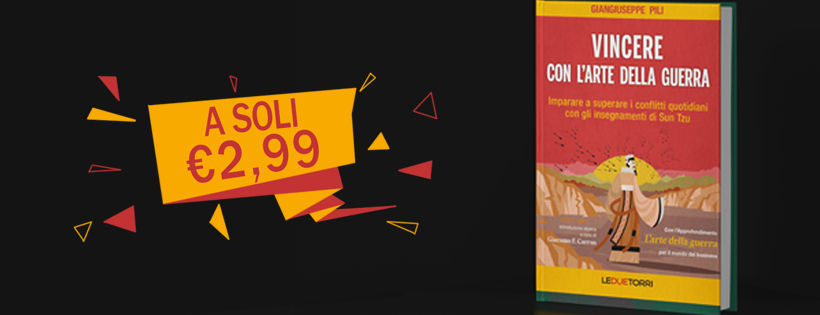
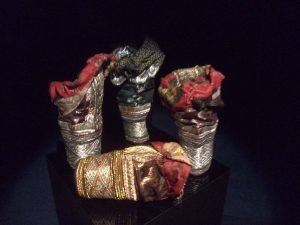
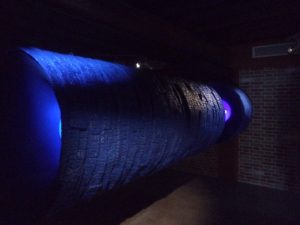

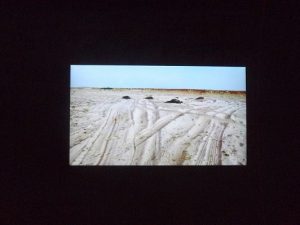
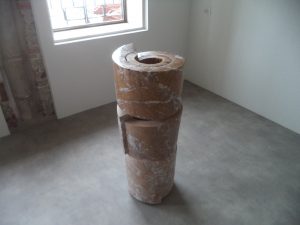
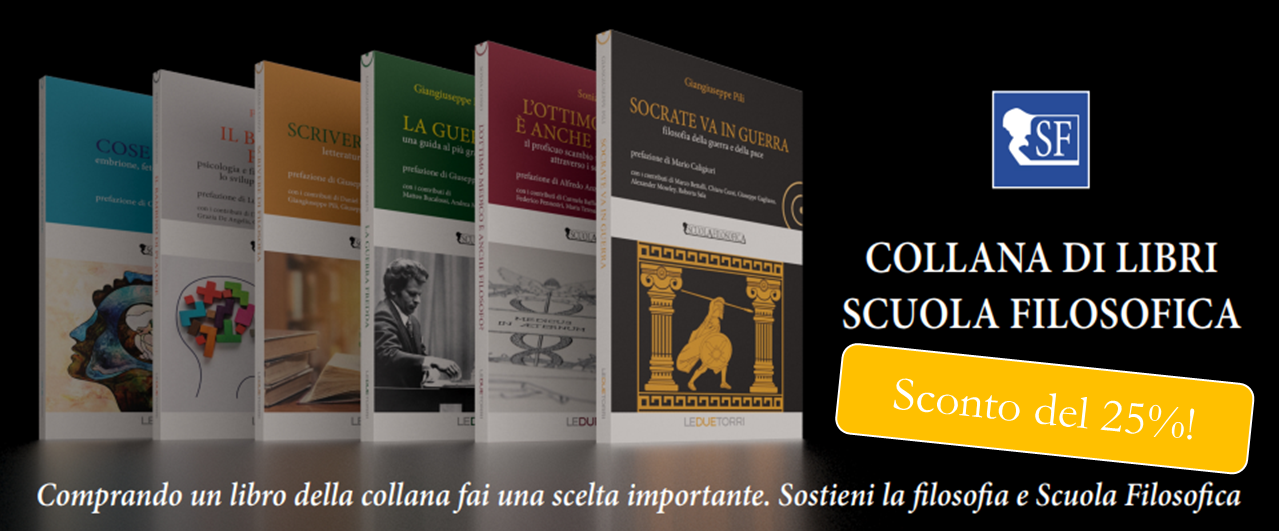

Be First to Comment